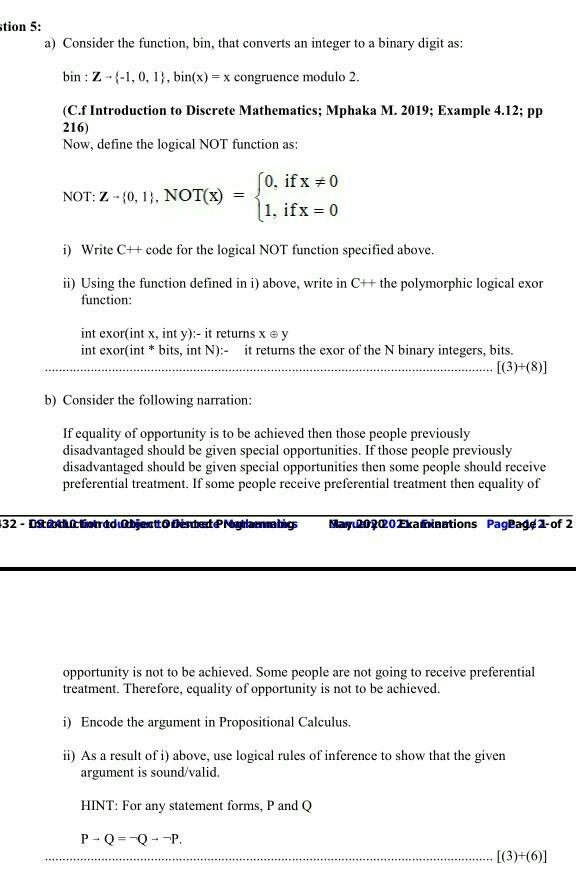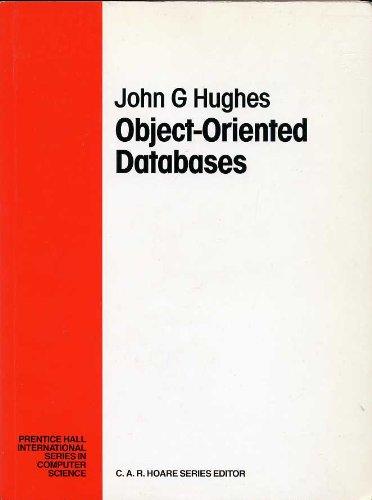Answered step by step
Verified Expert Solution
Question
1 Approved Answer
stion 5: a) Consider the function, bin, that converts an integer to a binary digit as: bin : Z-(-1,0,1), bin(x) = x congruence modulo 2.

stion 5: a) Consider the function, bin, that converts an integer to a binary digit as: bin : Z-(-1,0,1), bin(x) = x congruence modulo 2. (C.f Introduction to Discrete Mathematics; Mphaka M. 2019; Example 4.12; pp 216) Now, define the logical NOT function as: NOT: Z - {0,1), NOT(X) 0, if x = 0 1, ifx=0 i) Write CH code for the logical NOT function specified above. ii) Using the function defined in i) above, write in C++ the polymorphic logical exor function: int exor(int x, int y):- it returns xey int exor(int * bits, int N):- it returns the exor of the N binary integers, bits. [(3)+(8)] b) Consider the following narration: If equality of opportunity is to be achieved then those people previously disadvantaged should be given special opportunities. If those people previously disadvantaged should be given special opportunities then some people should receive preferential treatment. If some people receive preferential treatment then equality of 32 - Osteotan tioddbjexto estetightartig May207020Ekafrinations Pageage2-of 2 opportunity is not to be achieved. Some people are not going to receive preferential treatment. Therefore, equality of opportunity is not to be achieved. i) Encode the argument in Propositional Calculus. ii) As a result of i) above, use logical rules of inference to show that the given argument is sound/valid. HINT: For any statement forms, P and Q P-Q = -Q--P. [(3)+(6)]
Step by Step Solution
There are 3 Steps involved in it
Step: 1

Get Instant Access to Expert-Tailored Solutions
See step-by-step solutions with expert insights and AI powered tools for academic success
Step: 2

Step: 3

Ace Your Homework with AI
Get the answers you need in no time with our AI-driven, step-by-step assistance
Get Started


